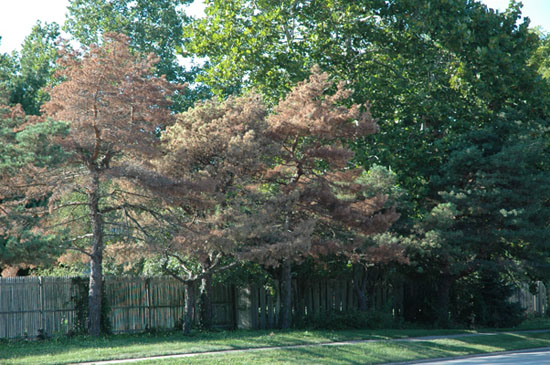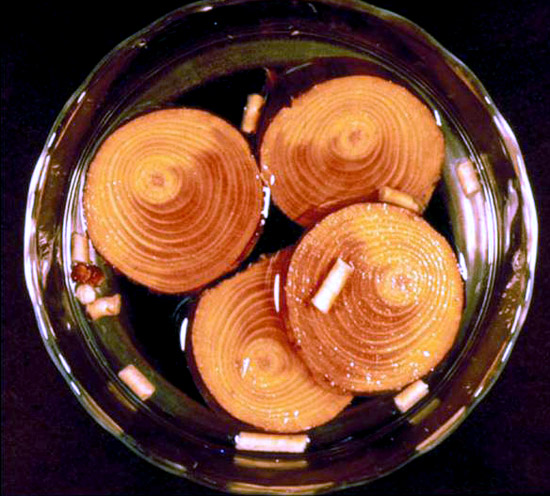Issue 10, June 25, 2010
Pine Wilt
Pine Wilt is the only vascular disease of pines. It is much like Verticillium wilt on deciduous trees except the pathogen is a nematode rather than a fungus. Pinewood nematode is the cause of Pine Wilt. It moves from tree to tree by way of sawyer beetles. It does not move through the soil. It does not move by branch contact or by other mechanical means. The only method of infecting pines with the nematodes is via one of the sawyer beetles.
Pine Wilt can be seen clearly now on many Scotch and Austrian pines. Look for pines like the ones in the first image. These trees will not recover. They first turned gray/green, then brown. The progression from green to brown can be as short as a month. You will not see green needles on the stem tips or on older growth. Occasionally a section of the tree is infected, but it always infests entire branches. There is no recovery once a tree has pine wilt. The only pine grown in Illinois that is not susceptible to Pine Wilt is white pine. When white pines look like the symptoms described here, usually white pine decline (see issue #2, 2010) is the cause, not nematodes.

To test a pine for the presence of pinewood nematodes, take sample branches that are 2" in diameter and about 12" long. The branches should be from an area having brown needles. The testing lab will cut off discs of wood and float them in water overnight, as seen in the image. Nematodes will move out of the wood and into the water where they can be viewed with a dissecting microscope. Trees that appear like the ones in the image will not recover. Do not allow them to remain in the landscape for long. Doing so increases the risk that the beetles will feed on your tree, pick up pinewood nematodes, and spread it to other trees. There is no chemical control for this pathogen.

For more information on Pine Wilt, consult Report on Plant Disease #1104.--Nancy Pataky
Author:
Nancy Pataky